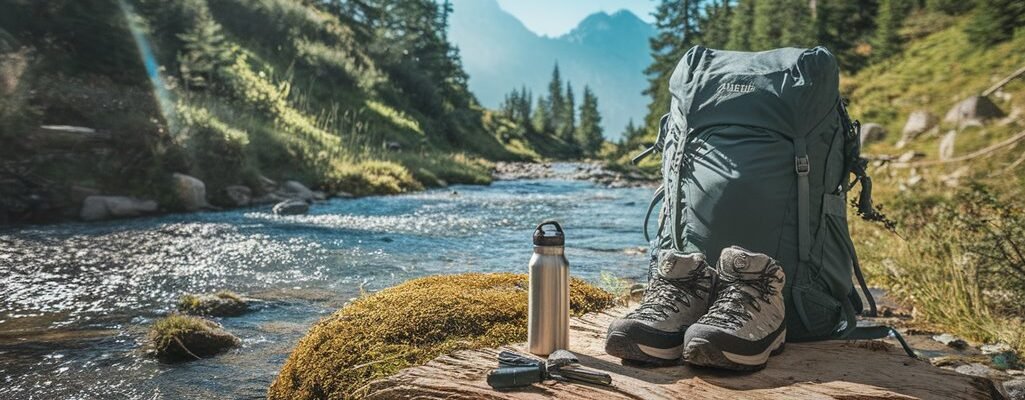
Must-Have Gear for Your Next Alone Adventure
When you set out on a solo adventure, having the right gear can make all the difference between a challenging trip and a memorable one. You’ll want tools that keep you on track, shelter that holds up under changing conditions, and equipment that ensures your safety without weighing you down. But what exactly should you prioritize to stay prepared and comfortable when you’re on your own?
Essential Navigation Tools
When you’re heading out solo, having reliable navigation tools can make all the difference between a smooth journey and getting lost.
You’ll want a topographic map of the area—digital or paper—so you can track your route clearly. Pair it with a sturdy compass; it’s simple, dependable, and won’t run out of batteries like GPS devices.
Speaking of GPS, a handheld GPS unit can be a lifesaver, especially if you’re venturing into unfamiliar terrain. Don’t forget to familiarize yourself with how to use all your tools before you go.
Also, consider a personal locator beacon or satellite messenger for emergencies. With these navigation essentials, you’ll stay confident and on course throughout your solo adventure.
Reliable Shelter and Sleeping Gear
Since your shelter and sleeping gear are your primary protection against the elements, choosing reliable, lightweight options is essential. You want a tent or tarp that’s easy to set up but sturdy enough to withstand wind and rain.
Look for materials with durable water resistance and strong poles or guy lines to keep you secure. For sleeping, a compact sleeping bag rated for temperatures you expect is crucial. Pair it with an insulated sleeping pad to keep moisture and cold from seeping in from the ground.
Don’t forget a comfortable pillow or stuff sack for neck support. With the right shelter and sleeping gear, you’ll rest well and stay safe, giving you the energy to enjoy every moment of your solo adventure.
Clothing for Variable Weather Conditions
Because weather can change rapidly during solo trips, you need clothing that adapts just as quickly. Start with moisture-wicking base layers to keep sweat off your skin, preventing chills when temperatures drop.
Add an insulating mid-layer, like a fleece or lightweight down jacket, to trap warmth without bulk. Top it off with a waterproof, breathable outer shell to shield you from wind and rain.
Pack versatile pieces that layer easily and dry fast. Don’t forget a hat and gloves—they’re essential for sudden cold snaps. Choosing quick-drying fabrics over cotton ensures you stay comfortable.
Food Storage and Cooking Equipment
Two essential categories you’ll want to focus on for solo adventures are food storage and cooking equipment. Choose lightweight, compact containers that keep your food fresh and protected from wildlife. Vacuum-sealed bags or airtight canisters work great for preserving meals and snacks.
For cooking, a portable stove with fuel canisters offers convenience and efficiency without heavy gear. Don’t forget a reliable lighter or waterproof matches to get your fire going quickly. Opt for multipurpose cookware like a pot that doubles as a bowl, saving space in your pack.
Also, pack utensils that are durable yet lightweight, such as titanium sporks. Prioritize gear that’s easy to clean and quick to set up, so you can spend more time enjoying your adventure instead of fussing with complicated equipment.
Safety and Emergency Supplies
Every solo adventurer needs a solid safety kit to handle unexpected situations.
Start with a compact first aid kit tailored to your adventure’s risks—include bandages, antiseptic wipes, pain relievers, and any personal medications.
Add a reliable whistle and a mirror for signaling help if you get lost.
Pack a sturdy multi-tool to tackle minor repairs or emergencies.
Don’t forget a fire starter, like waterproof matches or a lighter, to stay warm or cook food if necessary.
Include a space blanket to prevent hypothermia and gloves to protect your hands.
Finally, carry a small flashlight or headlamp with fresh batteries to maintain visibility after dark.
Preparing these essentials ensures you can respond confidently and stay safe when you’re on your own.
Communication Devices and Power Sources
When you’re venturing out solo, staying connected can be a lifeline. Bring a reliable communication device like a satellite phone or a personal locator beacon (PLB) that works even when cell service fails.
Smartphones are handy, but don’t rely on them alone—signal can be spotty in remote areas. Pack extra power sources such as portable solar chargers or high-capacity power banks to keep your devices running.
Always fully charge your gear before heading out and consider carrying backup batteries. Managing your power efficiently ensures you can call for help or navigate when needed.
With the right communication tools and power backups, you’ll stay safer and more confident during your solo adventure. Don’t underestimate the peace of mind these essentials provide.
Conclusion
By packing these must-have items, you’ll stay safe, comfortable, and prepared on your solo adventure. Trust your navigation tools to keep you on track, bring reliable shelter and clothing for any weather, and have cooking gear ready for nourishing meals. Don’t forget safety supplies and communication devices to handle emergencies confidently. With the right gear, you’ll enjoy every moment of your journey, knowing you’re ready for whatever comes your way.




